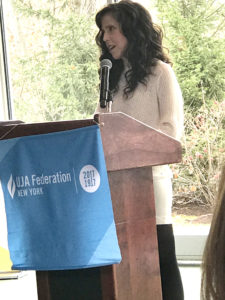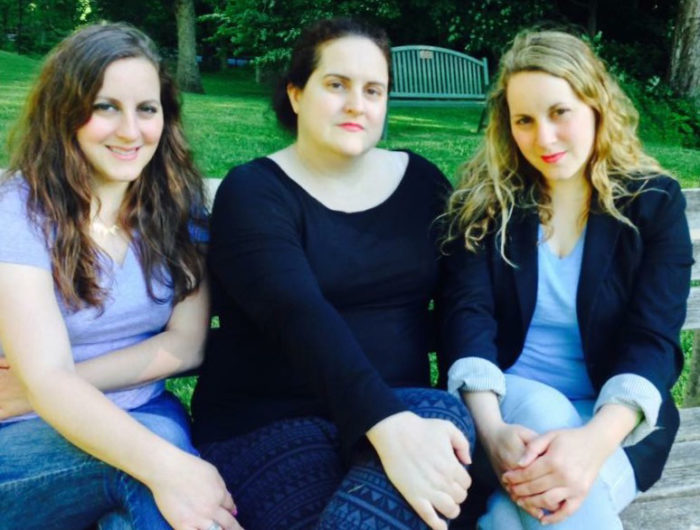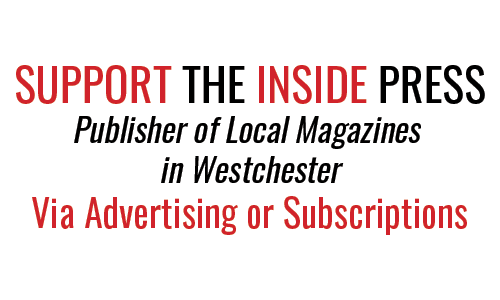
COURTESY OF UJA WESTCHESTER
Amy Silverstein’s first heart gave out in 1988. She received her first transplant, the heart of a 13-year-old child, after spending two lonely months in the hospital. This heart, which was expected to last 10 years, gave her 25 more years of life.
When her second heart failed, she realistically did not expect to receive a second donor heart.

COURTESY OF FLOOD SISTERS FOUNDATION
A Dire Need for Organ Donations
The American Transplant Foundation, an organization dedicated to helping people to find organ donors and providing emotional and financial support to transplant patients and donors, estimates that over 100,000 people in this country are on a waiting list for an organ transplant. Every 10 minutes another name is added to a transplant list. Both Daniel Flood and Amy Silverstein beat the odds.
When Flood was in his 60’s, he found out that he was born with one kidney. He developed hypertension, which eventually destroyed his one kidney. Neither his three daughters nor his wife were donor matches for him. His daughters decided to take an unorthodox route and posted for a kidney donor on Craigslist. “The Craigslist ad was a shot in the dark!” states his daughter, Jennifer Flood. “We used Craigslist for selling items, finding jobs, for childcare. It was a success for all these things, and we said why not post for a kidney donor in the volunteer section for dad?” The ad sparked the interest of an acquaintance who worked for the tri-state news radio station WCBS 880AM. She interviewed the Flood sisters, enabling a wider audience to hear their story.
Silverstein already outlived doctors’ expectations. After her first transplant, she was able to finish her third year of law school, marry her husband, Scott, raise her son, and live an active, fulfilling life. Yet, life with her donor heart was not carefree. She was often nauseous, had around 15 infections every year, underwent over 70 painful heart biopsies, took thousands of doses of medicines, and suffered from breast cancer caused by the anti-rejection drugs. “I didn’t stop,” says Silverstein. “I went to the gym and stood online at the grocery store, no matter how nauseous I felt that day. I kept going. I always tried to put on a good face.” In 2014, 26 years after she received that first donor heart, her heart failed. Encouraged by her family and friends, she travelled across the country to Cedars-Sinai Hospital in California and put herself back on the donor list.
The American Transplant Foundation estimates that liver and kidney disease kill more than 120,000 people every year. Twenty-six million Americans have kidney disease, and many do not even know it. Every year, there are approximately 6,000 living donations. Living donors can donate kidneys, while hearts are donated by someone who is brain dead but still on life support. A heart donor must be under 65 years old and cannot have a history of heart disease or trauma to the chest. As difficult as it is to receive a kidney, it is significantly harder to find a matching donor heart. To get on the donor list for a heart, candidates must adhere to a strict set of health-related rules.
After the Flood family’s radio interview, thousands of strangers, reached out to them. They were able to start a widespread campaign to find a matching donor for Daniel. They tracked potential donors via an Excel spreadsheet, personally speaking to every potential donor. Jennifer Flood, a nurse, knew that Daniel’s options were limited as he could only receive a kidney from a donor with an O blood type. After their review, the list dwindled down to six potential donors, three of whom were disqualified as a result of other medical issues. According to Jennifer, “The campaign was an emotional rollercoaster.”
Everything was different for Silverstein the second time her heart failed. In a hospital bed across the country, she had little hope that she would survive. Yet she was surrounded by much love and support, which helped her to persevere. Nine of Silverstein’s friends put together a schedule, and they took turns flying from New York to California to stay with Silverstein in her hospital room. Visitors were few and far between when she was 25. At 50, after her second heart failed, her friends did not leave her side. These friendships were “life-saving and illuminating,” according to Silverstein, who said that she realized the value and magnificence of her female friendships and spoke about them at a recent UJA event at Chappaqua’s Temple Beth El.
How the Organ Waitlist Works
According to the American Transplant Foundation, the waitlist for an organ transplant is not simply a numerical line. The waitlist encompasses a gigantic pool of patients, all of whom are characterized by their blood types, health needs, severity of the illness of the candidate, geographic location of the candidate and specific genetic characteristics. If a donor becomes available, matching features are entered into the system and a list of potential candidates, starting locally and possibly spreading nationally is developed.
Daniel Flood was extremely fortunate. An unknown woman from Monterey, California saw his daughters’ Craigslist ad in 2008 and offered to donate a kidney to Daniel. The donor empathized with the family’s situation, as she lost a close mother figure and was particularly close to her father.
In December 2009, Daniel received a new kidney. His family’s unconventional campaign to find a matching kidney donor was a success.
Two months into her stay at Cedars-Sinai Hospital, Silverstein was offered another heart. Once again, she matched with a 13-year-old girl, and this child would give Silverstein the invaluable gift of a longer life. “With this second transplant, I don’t know how long I have,” noted Silverstein, who travels back to California every six months to see her doctors. “But I know that whenever I need to talk to someone, I have nine friends I can call, and I will have an honest, free-flowing conversation. I have an incredible support system.”
Silverstein is particularly lucky. Many people in her situation do not have people on whom they can rely. Autumn Porter, a Senior Program Coordinator at The American Transplant Foundation, believes it is vital to create a network of support for transplant patients. The Foundation has a mentorship program to help both transplant candidates and donors. This program also gives people a platform through which transplant candidates can help find living donors and to get their stories out to a wider audience. These resources are designed to alleviate some of the stress of this process for transplant patients.
Complications from Immunosuppresive Drugs
Since his transplant, Daniel Flood feels significantly better and appreciates that he can enjoy his life and his family. Silverstein has been re-energized by her third heart, running three times a week. However, she knows that with a heart transplant “you are trading one disease for another.” She is grateful for the medical advances over the past 25 years. All transplant patients must take anti-rejection, or immunosuppressive drugs. These drugs block the immune system, helping to protect the new organ and help maximize its functionality. Long-term use of these drugs can lead to complications, including diabetes, high blood pressure and some cancers.
These vital anti-rejection drugs are often unbelievably expensive. Porter notes, “Many people cannot afford these protocols.” The American Transplant Foundation helps transplant patients to access these medicines. The Foundation’s “Patient Assistance Program” also offers financial help for donors, helping them to pay for their expenses.
Educating Others About Organ Donations
After helping their father, the Flood sisters wanted to use their newfound knowledge to help other people find living kidney donors. They started Flood Sisters Kidney Foundation and, thus far, have helped to match 11 other people with living donors. Leveraging social media and various media outlets, they share patients’ stories. “Every story is unique. I believe people are driven to help someone in need because they have seen someone close to them receive a transplant or go through setbacks in their lives, and they want to make a difference,” states Jennifer. The Flood sisters hope to enhance and expand their Foundation, incorporating an educational component and nutritional program. They also recently held a Bon Jovi acoustic concert at Tarrytown Music Hall earlier this month with part of the proceeds benefitting the Foundation.
Silverstein inspired millions with her story. In 2008, Silverstein wrote about her first heart transplant in Sick Girl. In 2017, she authored My Glory Was I Had Such Friends, the story of how the support of her friends was life-changing for her when her second heart failed. JJ Abrams plans to bring her latest story to television. “Appreciate when you feel well,” Silverstein says.
“And remember, even in my position, all good things are possible. Try not to be defined by it. It is very easy to get swallowed up by the illness that you have. I’ve been lucky not to become my illness and that is my hope for others.”
